This is our off week for updating the Top 30s, so we figured we'd go ahead and introduce monthly Top 100 updates. This is the first iteration, which was built off five individual submissions from Matt Thompson, Jake Kerns, Adam Kiel, Grant Carver, and Harris Yudin.
Our next update will take place the day of the All-Star game, Tuesday, July 11th, and that update will include player capsules and incorporate recent draftees into the list.
For now, here's how the team thinks the Top 100 stacks up:
1. Elly De La Cruz - SS - Cincinnati Reds
2. Jackson Holliday - SS - Baltimore Orioles
3. Jordan Walker - OF - Jordan Walker
We haven't officially updated the OFP tiers, but there's a pretty strong chance this comprises the 70s. There was some debate at the top of our list when we started putting this together two weeks ago, but De La Cruz managed to convince the holdouts that he was the most dynamic talent in the minors and that his ability translates to the big leagues. He'll undoubtedly need to cut down on the strikeouts, something he’s already worked on, but his upside rivals any player in baseball. Holliday will need to wait until De La Cruz graduates to take the reins on #1, but it's coming. What he has managed to do this year couldn't have been predicted, and he's simply mature beyond his years. He probably lacks the pure physical upside that De La Cruz offers, but he's nonetheless a safer bet to reach his otherwise lofty ceiling. Walker has looked much better since arriving back in St. Louis, and we're not down on him despite his initial struggles. We were relatively aggressive with his OFP coming into the year considering where our peers have him ranked, but we think he's a future masher who grows into a perennial all-star.
4. James Wood - OF - Washington Nationals
5. Eury Perez - RHP - Miami Marlins
6. Jackson Chourio - OF - Milwaukee Brewers
7. Marcelo Mayer - SS - Boston Red Sox
All of these guys could vie for 70 OFP status at the end of the year. Wood isn't the same level of athlete that De La Cruz is, but he moves incredibly well for his size and is nonetheless the highest upside power/speed threat remaining in the minors. He's mostly taken well to Double-A, but there are admittedly strikeout concerns present given his long-limbed frame. He fits within this tier, but there's probably more downward potential for him than the others. Perez would make a viable #4 prospect now that he's in the big leagues. His frame and stuff are massive, and we like him as the highest upside pitching prospect. Chourio hasn't had quite the season as anticipated and has slipped ever so slightly after being named our #4 prospect entering the season. We had him as a 70 coming into the year, and he, like Wood, has significant power/speed upside and just needs to make some changes in Double-A. Mayer might be the safest position player out of this group, but he lacks the same level of physical upside. It should be noted that he's struggled since reaching Double-A.
8. Andrew Painter - RHP - Philadelphia Phillies
9. Junior Caminero - SS - Tampa Bay Rays
It's been an unfortunate start of the season for Painter, but he's retained his status as a Top 10 prospect based on how he looked last year and over the offseason. He's yet to throw a pitch this year, but there's a case to be made that he has the most dominant stuff of any pitching prospect, including Eury Perez. He has a massive frame that should be durable once he's past his ailment, and we like him as a future ace-caliber starting pitcher. Caminero broke out last season, and he's done nothing but continue his performance in Double-A this season. The over-the-fence power has slowed down a touch at the higher level, but that's the long-term profile. He's going to mash and may reach the big leagues as soon as next season.
10. Bobby Miller - RHP - Los Angeles Dodgers
11. Gavin Williams - RHP - Cleveland Guardians
The Dodgers' newest potential ace has unsurprisingly taken to the big leagues. It's massive stuff across the board, and he looks poised to finish out the year with the big league squad. That leaves Williams as the best remaining healthy minor league pitcher. He's drawn the same kind of comps that Andrew Painter has, and the raw stuff isn't that far off, meaning there's a case he could conceivably be ranked higher on this list. He was fastball-dominant in a recent Live Look, but it's a legitimate "screw you" pitch from the right-side. There's pretty clearly top-of-the-rotation upside.
12. Jordan Lawlar - SS - Arizona Diamondbacks
13. Evan Carter - OF - Texas Rangers
14. Pete Crow-Armstrong - OF - Chicago Cubs
We originally graded Lawlar as a 70 OFP in the offseason, but that was scaled back once we were able to do a consistency check among evaluators. The nudge down to a 60 OFP looks much better in hindsight, and we're still mildly concerned about the lack of performance despite the high ranking. Lawlar has as much upside at shortstop as any prospect, and the good news is his performance has substantially picked up in June. He should trend upwards into the Top 10 if he proves he's corrected the ship. Carter hasn't really had an issue with performance this year, but there are some questions about his long-term impact because he's not hitting for power and, when he does, it's exclusively to the pull side. Much of his value is derived from his superior approach. Crow-Armstrong has shown more impact at the plate than Carter and also has very loud defensive tools. There's a case to be made that he's the better prospect, but several of our evaluators indicated they were more bullish on Carter's offensive tools. They're both outfield prospects performing in Double-A and are essentially tethered to each other as a result.
15. Bryce Miller - RHP - Seattle Mariners
The right-hander received Top 10 consideration by one evaluator, but his collective ranking is just a touch lower. He's been impressive at the big league level, particularly across his first few starts, and the stuff is big enough to suggest a #2 ceiling. The Mariners have done incredibly well with this kind of arm, and it's pretty obvious he's among one the better young starters in the American League.
16. Colton Cowser - OF - Baltimore Orioles
17. Royce Lewis - INF/OF - Minnesota Twins
18. Noelvi Marte - 3B - Cincinnati Reds
Cowser has done nothing short of impressing in Triple-A to open the year. The 23-year-old has hit for power, stolen some bases, and, perhaps more importantly, demonstrated a strong approach with bat-to-ball skills. He's walking almost as much as he's striking out, and his performance as a whole is up across the board. It's an impressive, well-rounded profile for a player who should be able to stick up the middle long-term. Lewis is a bit of an enigma due to his injuries. He's healthy and again among the elite prospects in baseball. He is one of the more dynamic athletes in the big leagues, despite the long injury record, and he also has the performance to match. The former number one overall pick appears to be finally living up to his potential. As has been the case over the last several years, he just needs to remain healthy. Noelvi Marte's demise has been overstated. He's now on the minor league injured list, but he was having a strong season at the plate before suffering the injury. The 21-year-old was never going to be a shortstop at the highest level, and it seems like much of his criticism has come from added weight and that switch. The bat is legit.
19. Kyle Harrison - LHP - San Francisco Giants
20. Jackson Merrill - SS - San Diego Padres
Both of these guys have the pedigree and tools to perform, however both aren't necessarily having the season that most has expected. Harrison's command and control have backed up to the point that he's potentially in the midst of altering his repertoire to give him stuff he can better locate. The left-hander has #2 upside and has managed to succeed despite the extra base runners, but there's pretty clearly an opportunity for him to shore up that part of his game prior to a promotion to the big leagues. Merrill's in a similar situation in that he has an opportunity to improve his performance. The 20-year-old has moved down slightly in our rankings because he's not making the kind of contact that we anticipated. The approach and bat-to-ball skills remain sound, but he's putting too many balls on the ground and not hitting for much impact. We liked his hit tool as a potential 70, and that remains true despite the early season struggles. We're hopeful he can rediscover last year's performance based on the lack of strikeouts.
21. Ricky Tiedemann - LHP - Toronto Blue Jays
The 20-year-old's stuff popped before 2022, and he's continued his ascent through the minors. The left-hander is currently on the injured list in Double-A, but he showed serious bat-missing potential in his April and May starts. The good news is it's just a biceps injury and that he should be back on the mound later this summer. It's big stuff from the left-side, and he has comparable upside to the pitchers in front of him when healthy.
22. Kyle Manzardo - 1B - Tampa Bay Rays
23. Tyler Soderstrom - C/1B - Oakland Athletics
These players are similar in that they're offensive-oriented prospects with strong plate skills. Soderstrom continues to draw starts behind the plate, but he's likely a first baseman at the next level, particularly because of the presence of Shea Langeliers in Oakland. Manzardo has exclusively played first base and hit out of the designated hitter role in pro ball, but his bat is expected to fit there despite what may just be average power. The hit tool is quite strong for Manzardo and, while his upside probably isn't elite, he feels like a safe future big league starter. He's drawn comps to Daniel Murphy around Prospects Live. Soderstrom has more power but probably not quite as much bat. There's a little more risk with him given the approach, but he has an all-star upside at first base if he hits enough.
24. Matt McLain - 2B/SS - Cincinnati Reds
25. Taj Bradley - RHP - Tampa Bay Rays
The Cincinnati Reds have quickly become one of the most exciting teams in baseball, and McLain has become part of that. He’s near a graduation, but the 23-year-old has managed to continue his success at the highest level. He’s looking like an above-average regular. Bradley has shown serious flashes at the big league level, although he’s giving up quite a bit of contact and his control remains up-and-down. He has bat missing ability and likely settles in as a long-term #3 starter.
26. Harry Ford - C - Seattle Mariners
27. Carson Williams - SS - Tampa Bay Rays
28. Henry Davis - C/OF - Pittsburgh Pirates
29. Endy Rodriguez - C/OF - Pittsburgh Pirates
We’ll call this the catcher grouping. All of Ford, Davis, and Rodriguez had their supporters as the top of the trio, but it’s Ford who perhaps has the most upside. High school catchers are finicky, but he’s showing power and base stealing ability this year while also walking more than he’s striking out. It’s been an impressive season for the 20-year-old. Williams breaks up the catching party. He’s a teenage shortstop who also has speed and power. There are some concerns about the hit tool given the strikeouts, but he’s young with plenty of time to figure it out. Davis appears to be living up to his number one overall draft pick pedigree. He’s shown plenty of power and an improved approach while also drawing starts in right field. The power and arm would play if he does end up in the outfield, and we’re more bullish on his hit tool than anticipated. Rodriguez shares an organization with Davis, but he’s not showing the same kind of over-the-fence power. We nonetheless like him as a future Dalton Varsho-esque bat in the big leagues.
30. Brooks Lee - SS - Minnesota Twins
31. Luis Matos - OF - San Francisco Giants
32. Colt Keith - 3B - Detroit Tigers
Lee has been a quick mover since getting drafted by the Twins eighth overall last July. The approach and bat-to-ball skills are both good, and he’s also showing a lot of gap power. Questions have lingered about his defensive ability, but the team seems committed to him at shortstop for the time being. Matos has seen his stock rise considerably this season, and it’s tied almost exclusively to an improved approach. He’s making better swing decisions and has shown both power and speed since arriving in Triple-A. We have some concerns about his propensity to pop up, but he looks like he could be a slugger who neither walks nor strikeouts with any real frequency. It’s a unique profile. Keith has outperformed our expectations this year, particularly from a contact standpoint. He’s showing the power associated with third base, and he should make his debut sometime in 2024.
33. Tink Hence - RHP - St. Louis Cardinals
34. Mick Abel - RHP - Philadelphia Phillies
The Cardinals continue to handle Hence with care, and it’s for good reason. He has a prodigious arm that shows strikeout ability and overall impact. The team will need to take off the gloves at some point to get him used to working deeper into games, but the floor is a dynamic reliever based on what we’ve seen. The upside appears to be something like a #2 starter. Abel has a comparable upside, but the results haven’t been quite there due to wavering control. He’s borderline untouchable when he’s on, but his inability to hit his spots has led to a lot of fly ball contact this year. He should settle into a #3 or #4 starter with plenty of room to exceed that projection if he finds a grade of command and control.
35. Masyn Winn - SS - St. Louis Cardinals
36. Jasson Dominguez - OF - New York Yankees
37. Druw Jones - OF - Arizona Diamondbacks
38. Termarr Johnson - 2B - Pittsburgh Pirates
There may not be a more interesting grouping on this list. Winn is the best defensive shortstop in the minor leagues, and he’s also shown some over-the-fence power and speed this year. We’re worried the bat may ultimately be light, but he can be a standout defensive shortstop at the very least. Dominguez has tools across the board and has seen his performance improve over the last several weeks. Tethering him to a similarly tooled up Jones makes sense, but we’re concerned about the latter’s ability to make consistent contact given the poor swing mechanics he has so far shown in pro ball. The tools for both outfielders rival those of players higher up the list. Johnson has been streaky this year, but we’re believers in the hit tool. He’s still just 19 years old, but he’s going to need to hit to maintain his ranking as we progress further through the summer.
39. Brandon Pfaadt - RHP - Arizona Diamondbacks
40. Diego Cartaya - C - Los Angeles Dodgers
The right-handed Pfaadt has really struggled in the big leagues this year, and he’s trending down as a result. He has his supports here at Prospects Live, but the upside is probably closer to a #4 starter than some are willing to admit. Cartaya has similarly struggled, albeit in Double-A, but we’re not cooling on him as much as his ranking might indicate. There have been reports of him trying to alter his swing to unlock more power, and we’d like to see how that develops throughout the season. He can still be an above-average catcher who succeeds due to his arm strength and power.
41. Colson Montgomery - SS - Chicago White Sox
The 21-year-old’s tools aren’t too far off the more notable shortstop prospects who were drafted ahead of him in the 2021 draft. The biggest thing working against him is his health, as he’s yet to play a game this season. He’s in the complex league and expected to begin a rehab assignment soon. We like him as a second-half riser.
42. Ethan Salas - C - San Diego Padres
There’s been a ton of hype around the 17-year-old catcher, and he’s more than holding his own in the California League. He’s shown some power, something he’ll need to grow into, but we’ve been more impressed by his mature approach that includes working counts and finding pitches to put into play. His age is definitely a factor driving him up in our rankings, but it’s difficult to not be impressed by the teenager.
43. Jordan Westburg - UTIL - Baltimore Orioles
44. AJ Smith-Shawver - RHP - Atlanta Braves
45. Curtis Mead - 2B - Tampa Bay Rays
This is an advanced grouping given their presence in the upper minors and, in Smith-Shawver’s case, the big leagues. Westburg has shown more with the stick this year and expected, and that’s from both a contact and power standpoint. We’ve always liked him, but he’s elevated his game and is impacting the ball more frequently. Mead’s season hasn’t been nearly as impressive in Durham, but we’re not out on him despite his struggles. He’s now on the injured list. Smith-Shawver’s rapid ascent was unpredictable and, quite simply, impressive. He’s yet to draw a start in the big leagues, but he’s yet to look out of place coming out of the bullpen. It’s pretty big stuff from the right side.
46. Adael Amador - SS - Colorado Rockies
47. Brayan Rocchio - SS - Cleveland Guardians
Amador has continued last year’s breakout by maintaining his impressive approach and simply putting a ton of balls in play. His hit tool is truly impressive, and his added impact in the batter’s box is only a plus. His ranking makes him the top prospect in the Rockies organization. Rocchio reached the majors for the first time last month, although he’s yet to really show anything positive in his abbreviated appearances. We still like the hit tool, but there are questions about his long-term impact at the plate.
48. Sal Frelick - OF - Milwaukee Brewers
49. Marco Luciano - SS - San Francisco Giants
50. Heston Kjerstad - OF - Baltimore Orioles
51. Mason Miller - RHP - Oakland Athletics
The bookends of Frelick and Miller are currently injured. There was some expectation that Frelick would trend down slightly in these rankings, but there was enough support for him as a future contact-driven center fielder to essentially retain his stock despite the injury. He didn’t hit much before landing on the injured list. Luciano is still hitting below the Mendoza Line, in part because he’s striking out almost 30% of the time. He’s made up for it by also walking and getting into power, but there’s no question his stock is on the decline and largely buoyed by his offseason ranking. Kjerstad has made up for lost time over the last calendar year, and he’s suddenly knocking on the door to the big leagues. He only recently reached Triple-A, but we like both the hit and power tools and think he could grow into an above-average regular. Miller has dominant stuff when healthy, but his placement is representative of both his elbow injury and the reliever risk.
52. Dalton Rushing - C - Los Angeles Dodgers
53. Gavin Stone - RHP - Los Angeles Dodgers
54. Kevin Parada - C - New York Mets
55. Nick Frasso - RHP - Los Angeles Dodgers
The Dodgers are loaded, aren’t they? Rushing has quickly established himself as one of the better bats from last year’s draft class, and there’s some support out there for him to be ranked over Cartaya. Gavin Stone didn’t look big league ready during his debut, and much of that goes back to his below-average command. He’ll need to take a step forward in that department to live up to his potential and impact the Dodgers’ rotation. A more intriguing arm to us is actually Nick Frasso. It’s bigger raw stuff than Stone, and he also appears to have an edge in command and control. He’s yet to work many innings, but we have spoken to some scouts who believe he’s a legitimate Top 50 prospect in all of baseball. It’s potentially elite stuff. Parada isn’t too dissimilar from Rushing, and the pairing makes sense given their offensive-first mindset at catcher. Both may end up at a different position.
56. Cole Young - SS - Seattle Mariners
The 19-year-old has managed to walk more than strike out this year in the California League, and he’s also showing some gap power. We like the hit tool but question the over-the-fence power. He’s nonetheless impressed since the Mariners drafted him with the 21st pick last July.
57. Andrew Abbott - LHP - Cincinnati Reds
58. Emmet Sheehan - RHP - Los Angeles Dodgers
59. Ronny Mauricio - 2B - New York Mets
60. Cade Horton - RHP - Chicago Cubs
Andrew Abbott is more of a sum of his parts type arm than anything, but he’s in the big leagues and producing. He surged through the minors while dominating Double-A and pitching well in the Triple-A. The command hasn’t been as sharp yet, but he will eventually settle in as a command-over-stuff type arm for Cincinnati. Emmet Sheehan has some extremely unique traits and an 80-grade fastball from an incredibly low release. Of all the Dodger arms on this list, he’s got the strongest likelihood of ending up in the bullpen, but it’ll be a high leverage, closer type role if he does. Ronny Mauricio hits the ball as hard as anyone in Triple-A, but the issue is he swings and misses at a well-below average rate. He’s playing more of a utility role in an effort to get him to the big leagues, but he needs to make more contact. Cade Horton was our top college arm from the 2022 draft in our rankings and has proven to be that as he’s touching 99 MPH with a double-plus slider. It’s a relatively new pitch for him but has already become a weapon.
61. Edgar Quero - C - Los Angeles Angels
The 20-year-old has only recently jumped to the top of the Angels system. The stat line doesn’t immediately jump out, but he has an approach, bat-to-ball skills, and gap power. That’s enough of a foundation to suggest he can grow into an above-average catcher, particularly because his defense is also sound.
62. Zac Veen - OF - Colorado Rockies
63. Spencer Jones - OF - New York Yankees
64. Brady House - 3B - Washington Nationals
This is another tooled up trio. There’s no doubt Veen has struggled this year, but some of us think that’s largely environment-induced. He’s showing an approach and speed and simply needs to make better contact. Jones has Top 10 tools, but his strikeout rate - almost 35% - holds him back. He does a ton of damage when he connects, but there’s no guarantee he can get the bat on the ball often enough at the highest level. He continues to exclusively operate in center field, which is incredibly impressive given his six-foot-six frame. The raw tools are very similar to James Wood. House has completely resurrected his prospect stock this year. He’s hitting for power and contact, the latter of which we weren’t sure would happen. The 20-year-old still has a long road ahead, but his tools are also on par with players much higher on the list.
65. Dylan Lesko - RHP - San Diego Padres
66. Jacob Misiorowski - RHP - Milwaukee Brewers
The 19-year-old Lesko has yet to get into game action after undergoing Tommy John surgery before last year’s draft. It seems strange to see him moving up, but almost every evaluator at Prospects Live buys his upside as a #1 starter. He showed massive stuff before blowing out. We had Misiorowski ranked as a Top 100 guy after last year’s draft, and he’s done nothing but impress since then. The big right-hander has velocity and put-away stuff, and he’s also in the right organization for long-term success. He’s only worked five or more innings twice this year, but the organization appears to be ramping him up over the last month. There’s admittedly some relief risk.
67. Logan O’Hoppe - C - Los Angeles Angels
O’Hoppe was the top guy in the Angels organization before injuring his shoulder, and he’s only recently been passed up by Edgar Quero. He still has the look of a long-term above-average catcher and will stay on the list as he will miss the remainder of the season.
68. Drew Gilbert - OF - Houston Astros
69. Nick Nastrini - RHP - Los Angeles Dodgers
Drew Gilbert was one of the better hitters in High-A to start the season, taking advantage of the launching pad down there, but he’s ran into some problems in Double-A so far. It’s nothing we’re concerned with, and Gilbert still has a chance at being a five-tool guy. Nick Nastrini is part of that Double-A Tulsa rotation that may have more talent than some big league clubs. Nastrini has a four-pitch mix with three pitches being plus or better. His command isn’t as strong as some of the other Dodger arms, but he’s going to be a useful big league piece sooner rather than later.
70. Cam Collier - 3B - Cincinnati Reds
Cam Collier was one of the more interesting stories in the 2022 draft as his background is very unique. The plate skills and power here are as advertised and, although we’d like to see more power, the Florida State League is very tough on power bats. He may have to move to first base down the line based on the body, but we’re not ready to commit to that.
71. DL Hall - LHP - Baltimore Orioles
72. Joey Ortiz - SS/2B - Baltimore Orioles
73. Christian Encarnacion-Strand - 3B/1B - Cincinnati Reds
DL Hall dealt with a lower back injury this year that sapped a bit of velocity, but it appears he’s still going to be working as a starting pitcher. The stuff is amongst the best in all of baseball, but he needs to improve his command to reach his rotation ceiling. Joey Ortiz made his big league debut earlier this season and, while his defensive reputation is what will get him to the big leagues, his new offensive upside is what can give him an everyday role. Ortiz has always had exceptional contact skills, but his quality of contact has improved and he’s now driving the ball. Christian Encarnacion-Strand should be making his big league debut soon, but he’s an aggressive hitter that is up there to swing the bat. Lately he’s been taking more pitches (a small sample of course), but a call-up could be happening soon if he maintains these plate discipline gains.
74. Max Meyer - RHP - Miami Marlins
Max Mayer will miss all of the 2023 season due to Tommy John surgery. When healthy, he’s a power arm with a fastball that sits in the mid-90s, a double-plus slider, and a changeup that’s flashed plus but needs more consistency.
75. Jeferson Quero - C - Milwaukee Brewers
76. Samuel Basallo - C - Baltimore Orioles
77. Coby Mayo - 3B - Baltimore Orioles
Jeferson Quero already gets praise for his plus defense, but he’s been showing off some offensive skills in a tough Southern League after an aggressive assignment by the Brewers. Samuel Basallo and Coby Mayo are each attracting attention in the Orioles organization for what they do at the plate. Basallo is showing very strong exit velocities and swing approach metrics, while Mayo is putting up his best offensive season as he continues to hammer baseballs with a more mature approach.
78. Emmanuel Rodriguez - OF - Minnesota Twins
79. Yanquiel Fernandez - OF - Colorado Rockies
80. Luisangel Acuna - SS/2B - Texas Rangers
Emmanuel Rodriguez has the strikeouts piling up on him and has morphed into a bit of a three true outcomes type bat due to his extremely passive approach at the plate. When he connects, the ball flies, though, as he’s posted some impressive exit velocity numbers. He just needs to be more aggressive. Speaking of aggressive, we have Yanquiel Fernandez here who has been much too swing happy in High-A, but he’s also performing extremely well and looks like a future middle of the lineup bat. Luisangel Acuna can do a little bit of everything in addition to having plus wheels. Matt is extremely bullish on his offensive potential.
81. Gavin Cross - OF - Kansas City Royals
82. Chase DeLauter - OF - Cleveland Guardians
Gavin Cross hammers baseballs but has had a difficult time making consistent contact this year. His elite batted ball data tracks back to his college days, and he doesn’t get cheated at the plate. We covered DeLauter back in our Complex/DSL preview and noted that he’s returning from two major foot injuries. We loved his game at James Madison, and he should be sent out to make his full season debut soon.
83. Gabriel Gonzalez - OF - Seattle Mariners
84. Sebastian Walcott - SS - Texas Rangers
Gabriel Gonzalez is looking very much like a future middle of the lineup hitter in the Cal League, showing big power and better swing decisions. He’s surging up the list and could rise to inside the top 50 with a strong finish. Ranking Sebastian Walcott inside the T100 is an aggressive thing to do, but we’re confident in what we’ve seen and heard about him to this point.
85. Brock Porter - RHP - Texas Rangers
86. Bryan Woo - RHP - Seattle Mariners
Brock Porter checks all the boxes. He’s a physical dude with a good frame and should even continue to add good size to his frame. He repeats his delivery exceptionally well and has a strong four-pitch mix that he can command. He’s shortened the arm action a bit and is throwing more strikes while still maintaining his elite stuff. Bryan Woo returned from Tommy John in 2022 and surged through the minors. He has already made two big league starts this year with his solid three-pitch mix, with his fastball and slider flashing as plus pitches.
87. Edwin Arroyo - SS - Cincinnati Reds
88. Ryan Pepiot - RHP - Los Angeles Dodgers
89. Kevin Alcantara - OF - Chicago Cubs
A pair of sleepy Midwest League bats that are waking up and an injured pitcher make up this tier. Edwin Arroyo is an acrobat in the field but will need to tighten up the plate skills to fully realize his potential. He’s a power-over-hit infielder that is an above-average defender at the six. Dodgers arm Ryan Pepiot has been on the shelf all season due to a left oblique strain but, when healthy, he could be a future number three starter because of his mid-90s heater and double-plus changeup. Kevin Alcantara hits the ball extremely hard and is actually making slightly more contact this year across the board, but he will need to improve the swing decisions to fully reach his immense ceiling.
90. Robert Hassell III - OF - Washington Nationals
91. Benny Montgomery - OF - Colorado Rockies
Robert Hassell’s stock has dropped since moving to the Nationals in the Juan Soto deal. He broke his hamate bone in the AFL and has since had his 2023 season slowed by a separate wrist injury. He’s not pulling the ball enough to tap into the power here. He’s in danger of falling off of the list completely if it doesn’t turn around. Benny Montgomery is extremely tooled up and on the list because of his defensive abilities and power/speed potential. He could be similar to Harrison Bader if it all works.
92. Cade Cavalli - RHP - Washington Nationals
93. Jake Eder - LHP - Miami Marlins
94. Daniel Espino - RHP - Cleveland Guardians
A trio of arms in various stages of recovery. Cade Cavalli went down a few weeks prior to opening day with a grade 3 sprain of his UCL which required Tommy John surgery. He should be back next summer. Jake Eder is back on the bump now for the first time since August of 2021 after having Tommy John surgery. He will be a riser up this list and could be pitching in the big leagues in August or September if the Marlins want to push it. Daniel Espino’s raw stuff is on par with nearly any pitcher in the entire minor leagues, but he’s trended down as a result of a shoulder injury. He threw just 18.1 innings last year and won’t return until late 2024 at the earliest as he had surgery to repair a capsule tear in his shoulder.
95. Nick Yorke - 2B - Boston Red Sox
96. Jett Williams - SS - New York Mets
Nick Yorke is back after an injury riddled 2022 which, to his credit, he mostly played through. He’s showing improved power and has the strong exit velocity numbers to back that up. He’s making more contact, walking more, and hitting for more power so far in 2023. Jett Williams has excellent command of the zone for someone of his age and stature and has shown some recent signs of breaking out of his early funk. He has the type of on-base skills that profile at the top of a lineup.
97. Ben Brown - RHP - Chicago Cubs
98. Casey Schmitt - SS/3B - San Francisco Giants
Ben Brown has taken off this year and features a mid-90s heater with two above-average to plus breaking balls. He’s knocking on the door of the big leagues and should settle in as a high strikeout mid-rotation arm. He’s walking too many hitters right now, and both Jake and Adam saw him recently and came away concerned about his command. Casey Schmitt is an above-average defender at three different spots on the infield with an absolute cannon for an arm. He’s an aggressive hitter with solid batted ball data and should be a .260 hitter with 20+ homers while playing highlight reel defense. He looks like he will get a shot at being the Giants shortstop in 2024, and we like him even more at the hot corner.
99. Chase Petty - RHP - Cincinnati Reds
100. Noah Schultz - LHP - Chicago White Sox
We end the list with a pair of high upside arms that sit in the mid-90s and have a wipeout slider. Chase Petty has been handled with care this year, but he’s brought the four-seamer back into the arsenal and is having great success with it. There’s double-plus arm speed here, and the slider and split-change are missing bats. Noah Schultz has been sitting 95-96 MPH in his limited pro sample with a slider. Internally, we are very high on him and, for him to make this list with such a limited pro sample, is a statement in itself.






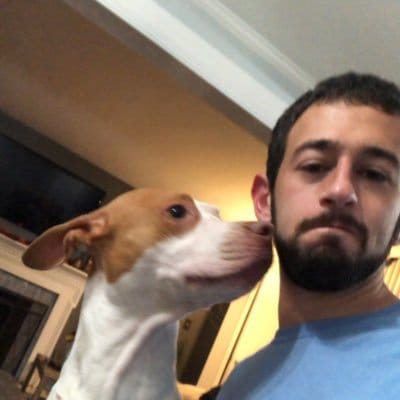
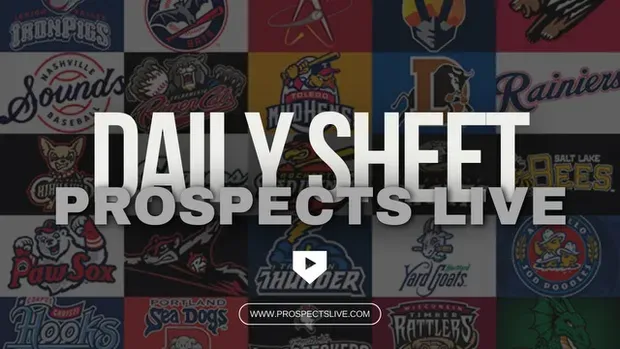



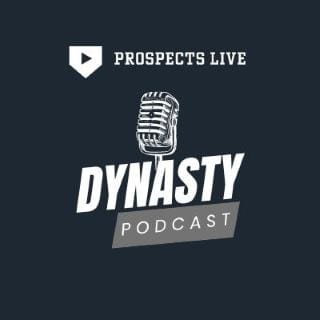

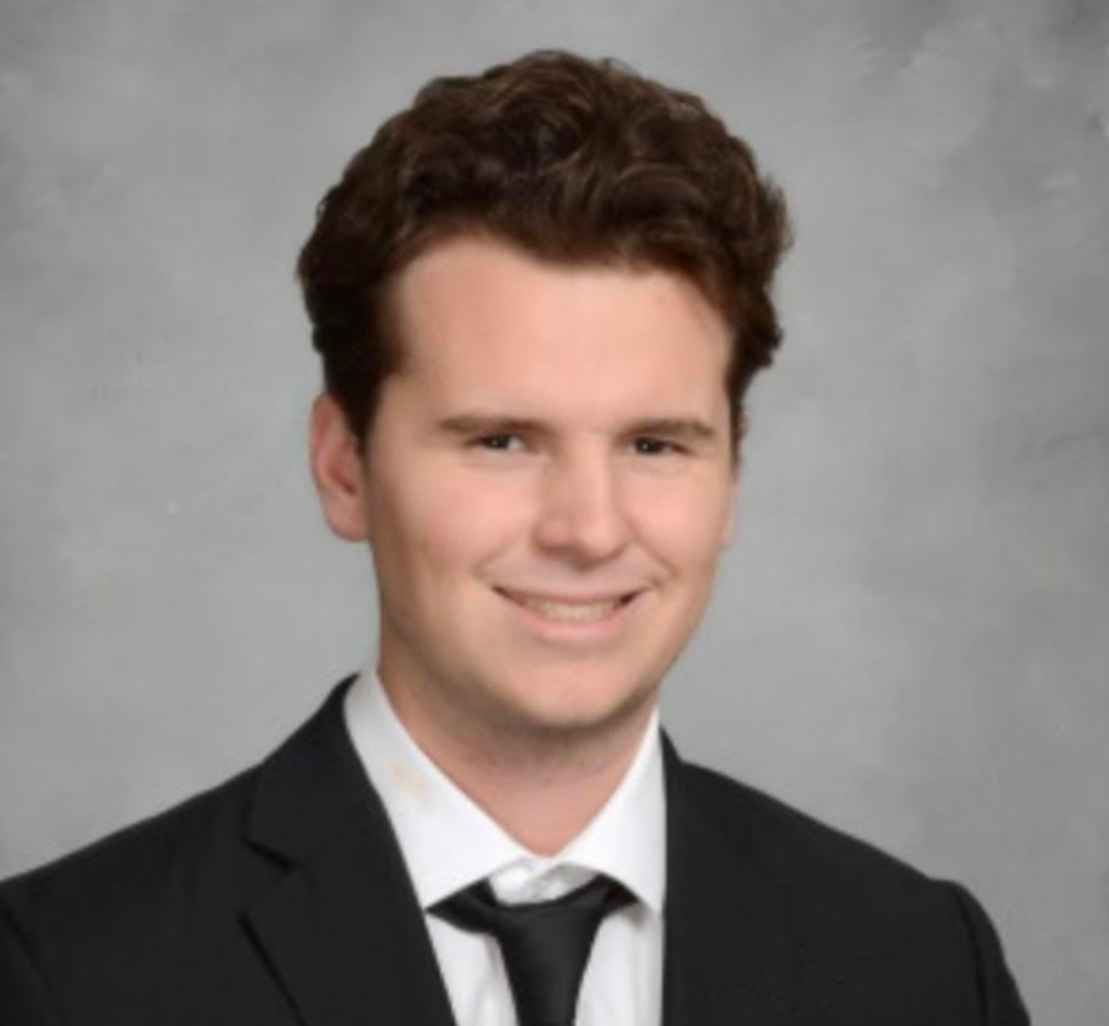
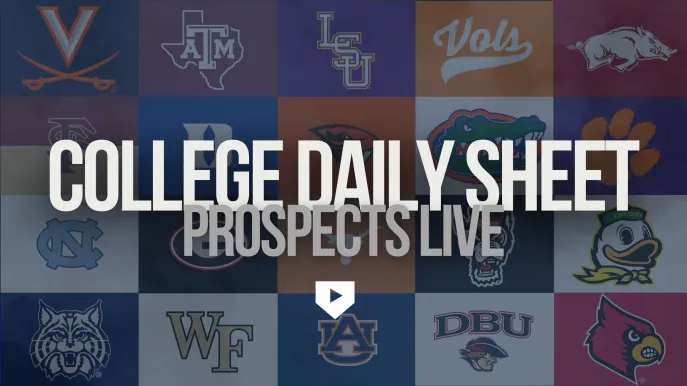
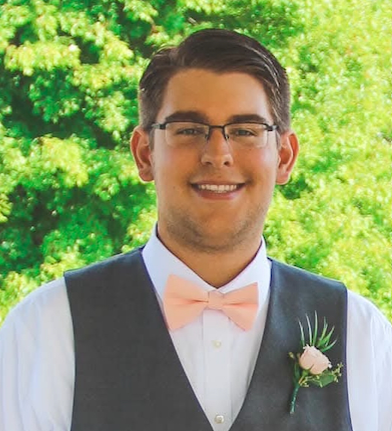
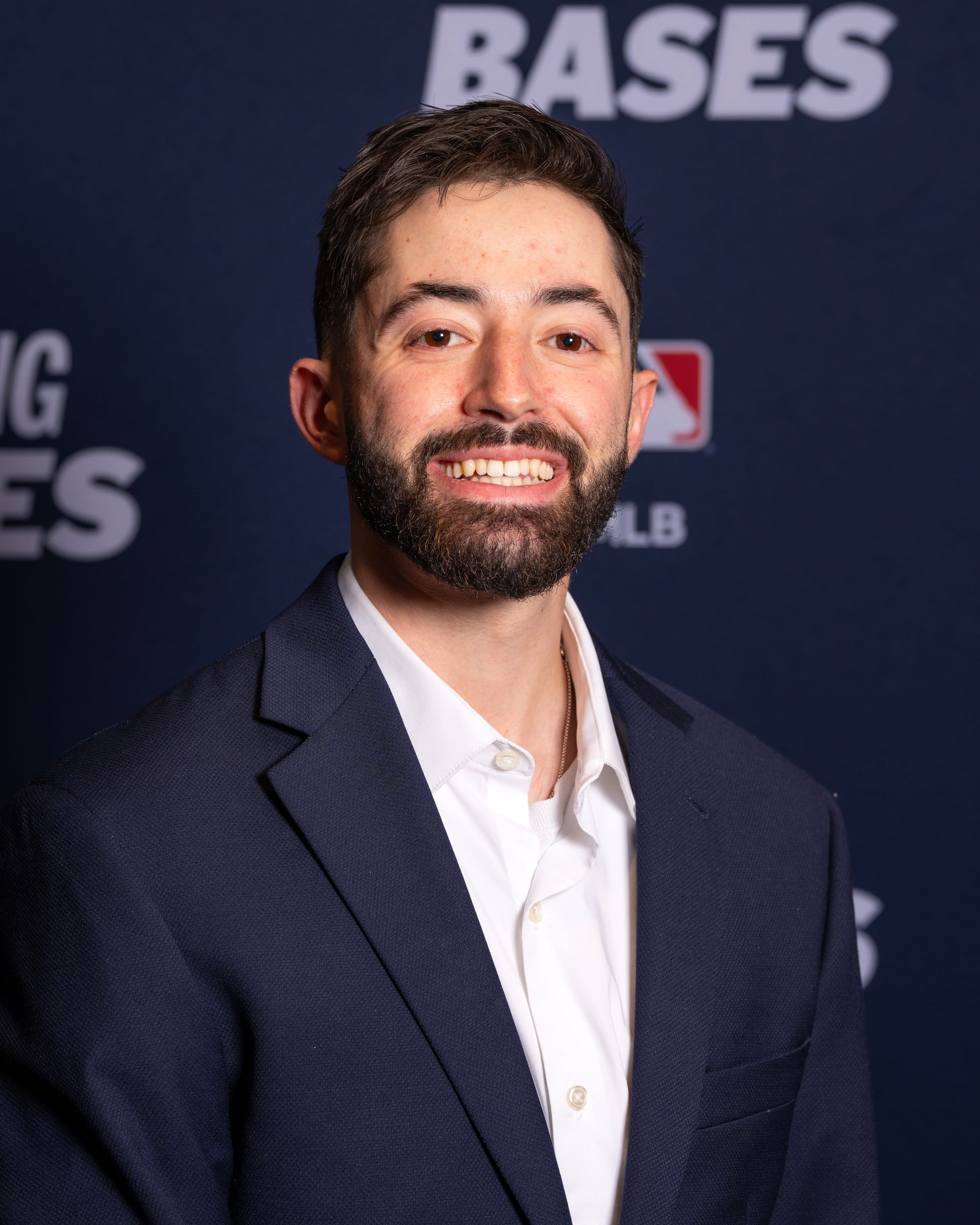
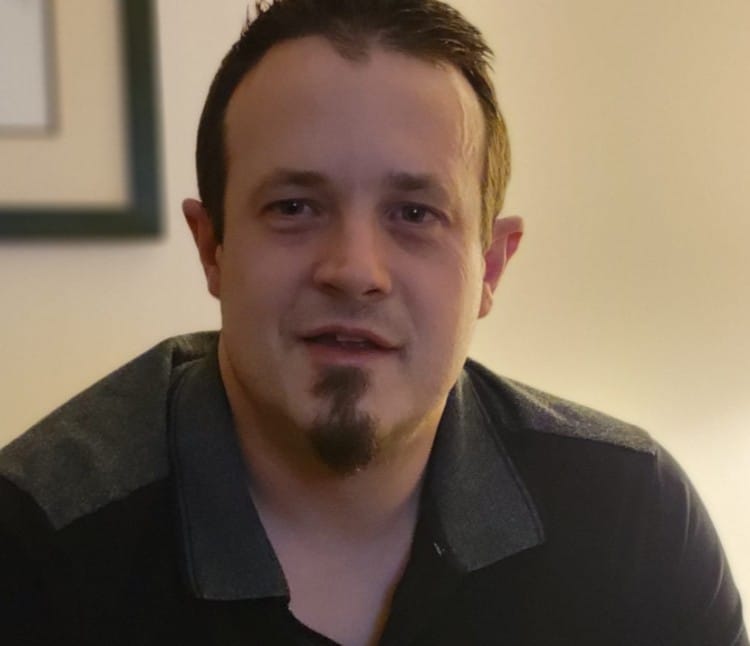



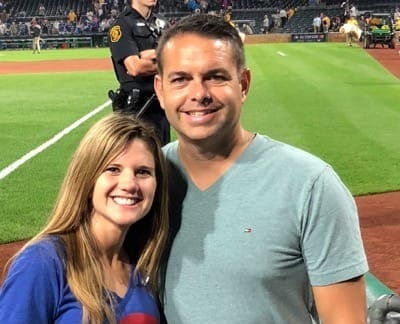

Discussion